We all have those foods we reach for without thinking – those familiar favorites that make our kitchens feel like home. But what if some of these everyday staples aren’t as good for us as we thought?
As nutrition science evolves, many foods we grew up with deserve a closer look. Let’s examine 18 kitchen classics and see if they truly deserve their prime pantry real estate.
1. Hot Dogs
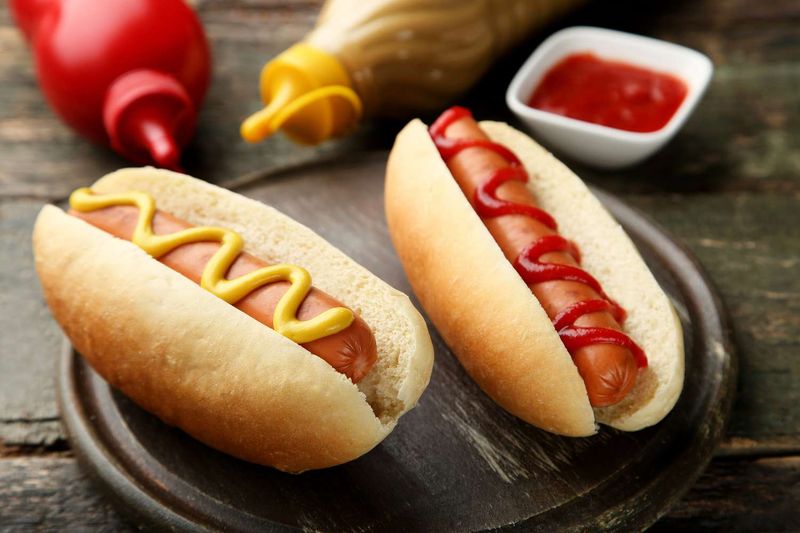
Remember when hot dogs were the highlight of every summer cookout? Those juicy tubes of mystery meat nestled in fluffy white buns, drowning in ketchup and mustard? Sadly, the nutritional reality is about as pretty as how they’re made.
These processed meat cylinders have been linked to increased cancer risk, heart disease, and high blood pressure. One typical frank contains up to 30% of your daily sodium limit! Limit yourself to occasional indulgence rather than weekly rotation.
2. Chocolate Bars

That silky, melt-in-your-mouth rectangle of happiness has gotten you through breakups, work deadlines, and traffic jams. But your faithful chocolate companion might be more frenemy than friend when it comes to your health goals.
Commercial chocolate bars are sugar bombs wrapped in pretty foil. A standard milk chocolate bar packs around 24 grams of sugar – nearly a day’s worth! Plus, the low cocoa content means you’re missing out on chocolate’s actual health benefits while loading up on fat and calories.
3. White Bread
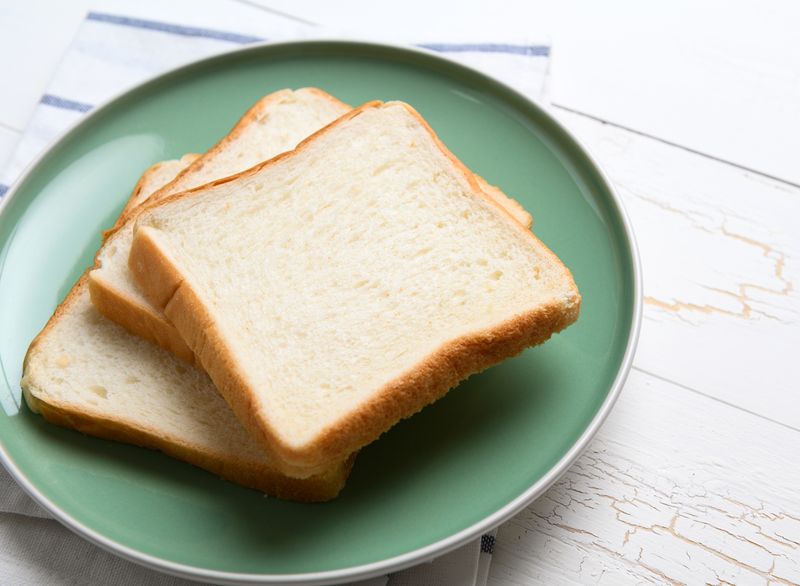
Nothing beats that cloud-like softness for sandwiches and toast, right? White bread has been America’s lunch staple for generations, but this refined carb superstar is essentially the nutritional equivalent of eating paper with sugar sprinkled on top.
The refining process strips away fiber, vitamins, and minerals from the wheat, leaving behind rapidly digested carbs that spike blood sugar faster than a roller coaster. Your body processes it almost like pure sugar, leading to energy crashes and increased hunger shortly after eating.
4. Butter
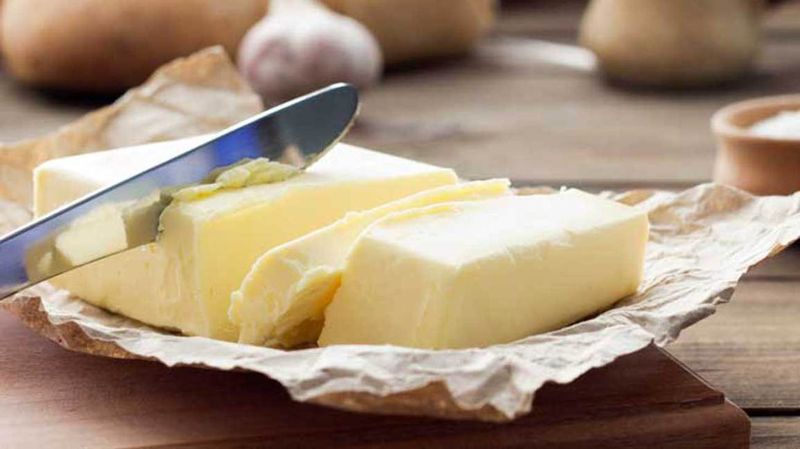
That golden block of creamy deliciousness makes everything taste better – from morning toast to baked potatoes. Butter’s comeback tour has been impressive after decades of margarine propaganda, but is its reputation rehabilitation deserved?
Recent research suggests moderate butter consumption isn’t the heart villain we once thought. It provides fat-soluble vitamins A, E, and K2, plus conjugated linoleic acid with potential health benefits.
5. Bacon
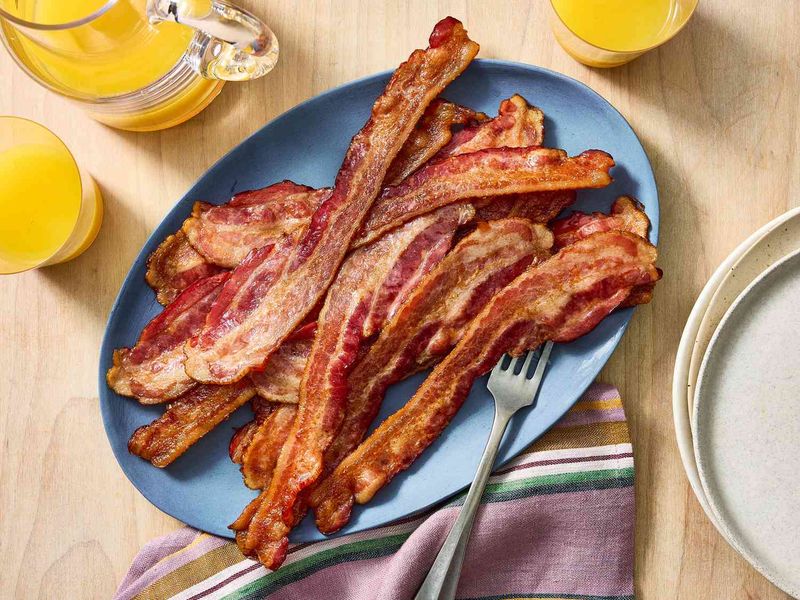
That intoxicating aroma that makes getting out of bed worthwhile! Bacon has achieved cult status in American food culture, appearing on everything from breakfast plates to ice cream. But this crispy, salty delight comes with serious baggage.
Processed meat studies consistently link bacon to increased colorectal cancer risk. A measly two slices contain around 400mg of sodium and 5g of saturated fat – before you’ve even had your morning coffee!
6. Canned Soup

Sick day salvation or sodium tsunami? Canned soup has rescued countless busy weeknights and cold-stricken afternoons. Pop the top, heat, and voilà – instant comfort in a bowl! Unfortunately, that convenience comes at a nutritional cost most of us aren’t calculating.
A single can of typical chicken noodle soup contains up to 40% of your daily sodium allowance – and who stops at one serving? This sodium overload contributes to high blood pressure, heart disease, and stroke risk. Many varieties also harbor BPA from can linings, MSG, and minimal vegetable content despite colorful label promises.
7. Full-Fat Cheese

Gooey grilled cheese, elegant charcuterie boards, comforting mac and cheese – full-fat cheese makes life worth living! This fermented dairy delight delivers serious calcium, protein, and vitamin B12, but also packs a caloric and saturated fat punch that can’t be ignored.
A single ounce of cheddar contains around 9 grams of fat (6g saturated) and 115 calories. Portion control is your best strategy. Use strongly flavored cheeses like parmesan or extra-sharp cheddar where smaller amounts deliver maximum flavor. Balance with plant-based meals throughout your week.
8. Potato Chips

That perfectly engineered crunch-salt-fat combination was literally designed to keep you reaching into the bag until you’re staring at crumbs. Food scientists have perfected the “bliss point” that makes potato chips nearly impossible to resist.
Beyond the obvious calorie concerns, chips are typically fried in oils that create acrylamide – a potential carcinogen – when potatoes are cooked at high temperatures. Most varieties deliver negligible nutrition alongside significant doses of sodium, fat, and sometimes artificial flavors and preservatives that your body simply doesn’t need.
9. Fried Chicken

Golden, crispy coating giving way to juicy, tender meat – fried chicken represents comfort food perfection for many Americans. Whether from grandma’s kitchen or a fast-food drive-thru, this classic delivers a dopamine hit like few other foods.
Unfortunately, that crispy coating absorbs significant oil during frying, turning a protein-rich food into a calorie and fat bomb. A single piece can contain 300+ calories and over 15g of fat. The oils used for commercial frying are often reheated multiple times, creating unhealthy compounds and trans fats.
10. Granola Bars

Tossed in gym bags and tucked into kids’ lunchboxes nationwide, granola bars have successfully marketed themselves as the virtuous snack choice. That convenient, portable package promises whole grains, nuts, and natural goodness – but a closer look reveals a different story.
Many commercial granola bars contain as much sugar as candy bars – up to 12g per small bar! Added chocolate chips, yogurt coatings, and honey drizzles pump up the sweetness while binding agents like rice syrup and corn syrup solids add empty calories. Even “protein” varieties often contain highly processed soy protein isolate.
11. White Rice
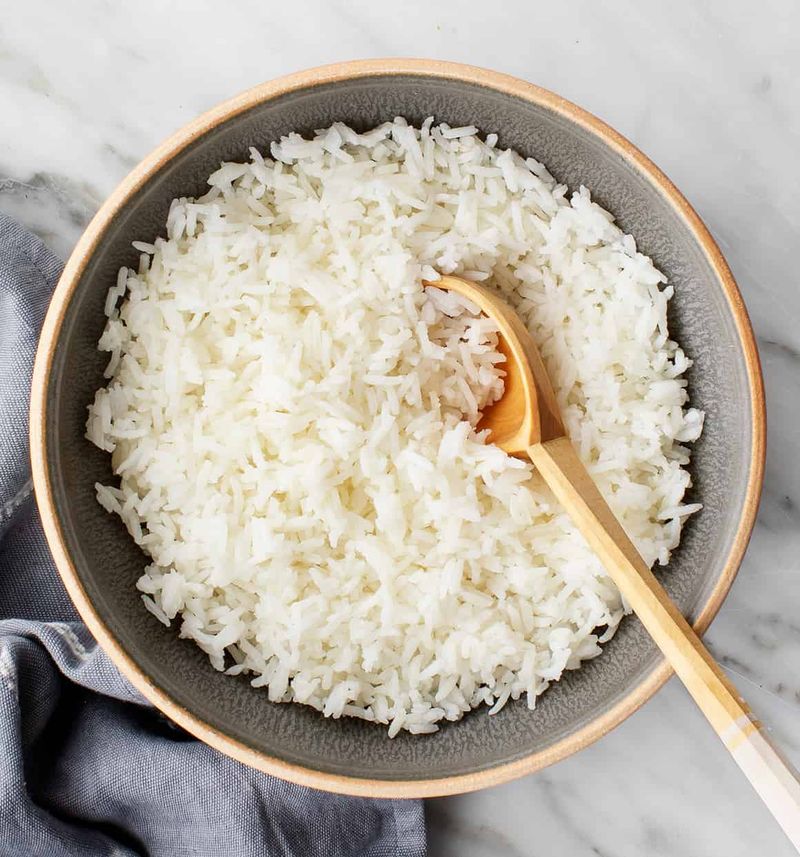
Fluffy, versatile, and the foundation of countless global cuisines – white rice seems like a harmless pantry staple. But this refined grain has had its nutritional superpowers stripped away faster than Superman encountering kryptonite.
The refining process removes the fiber-rich bran and nutrient-dense germ, leaving only the starchy endosperm. This creates a high-glycemic food that spikes blood sugar rapidly and offers minimal nutritional value beyond quick carbohydrates. While white rice is often enriched with B vitamins and iron, these added nutrients don’t fully replace what’s lost.
12. Instant Noodles
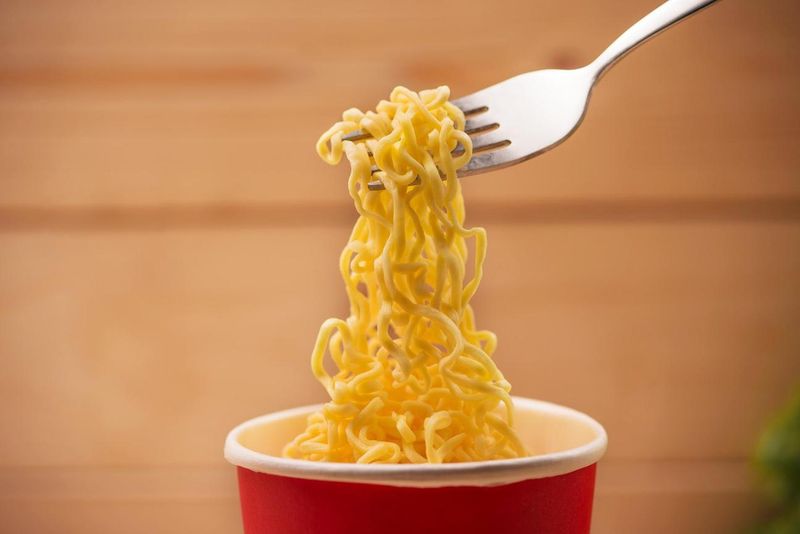
Three minutes to slurpy satisfaction! Instant noodles have saved countless students and budget-stretched families with their magical combination of cheap, fast, and tasty. That little flavor packet transforms hot water into something resembling soup – but at what cost?
A single package can contain over 1,500mg of sodium – more than half your daily recommended limit! The noodles are typically deep-fried before drying, creating a high-fat base before you even tear open the seasoning. Studies have linked regular instant noodle consumption to increased risk of metabolic syndrome, heart disease, and stroke.
13. Sugary Cereal
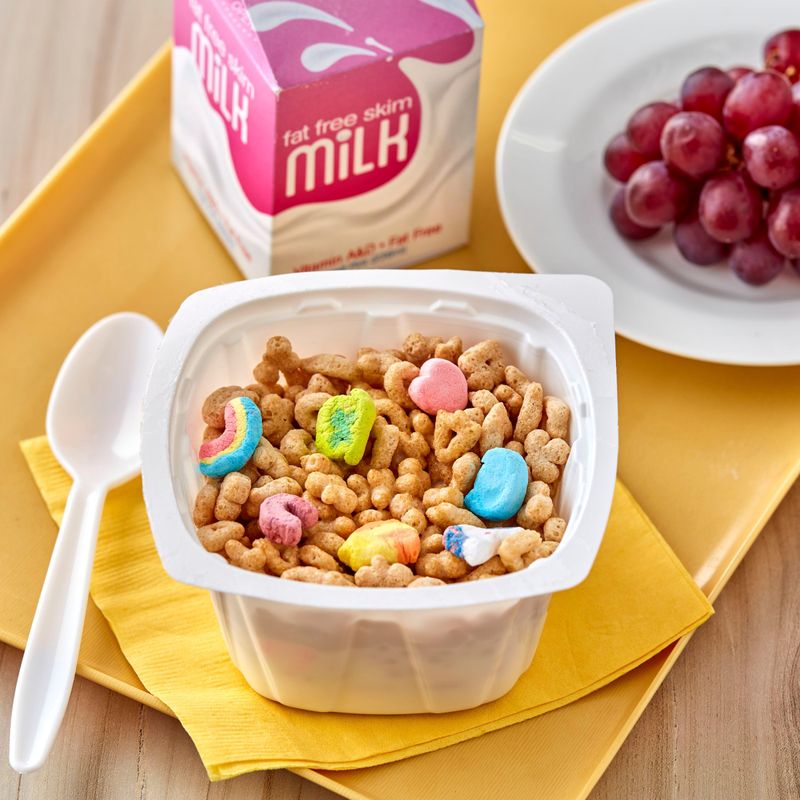
Those colorful boxes with cartoon characters promising fun, flavor, and supposedly essential nutrients have been breakfast table mainstays for generations. The crispy, sweet bowls of childhood nostalgia might be convenient, but they’re setting you up for a nutritional faceplant before 10 AM.
Many popular cereals contain more sugar per serving than a chocolate chip cookie! This sugar tsunami triggers insulin spikes followed by energy crashes, hunger, and cravings. Despite being fortified with vitamins, the processed grains offer minimal fiber or protein to sustain you through the morning.
14. Ice Cream

That creamy, cold ecstasy that makes summer bearable and breakups survivable! Ice cream delivers pure pleasure in a cone or cup, but this frozen treat packs a triple threat of sugar, fat, and calories that can derail even the most determined health goals.
Premium ice creams can contain 250+ calories and 15g fat per half-cup serving – and who stops at half a cup? The sugar content often exceeds 20g per serving, while offering minimal nutritional benefits beyond some calcium. Many varieties also contain artificial colors, flavors, and stabilizers of questionable health value.
15. Mayonnaise
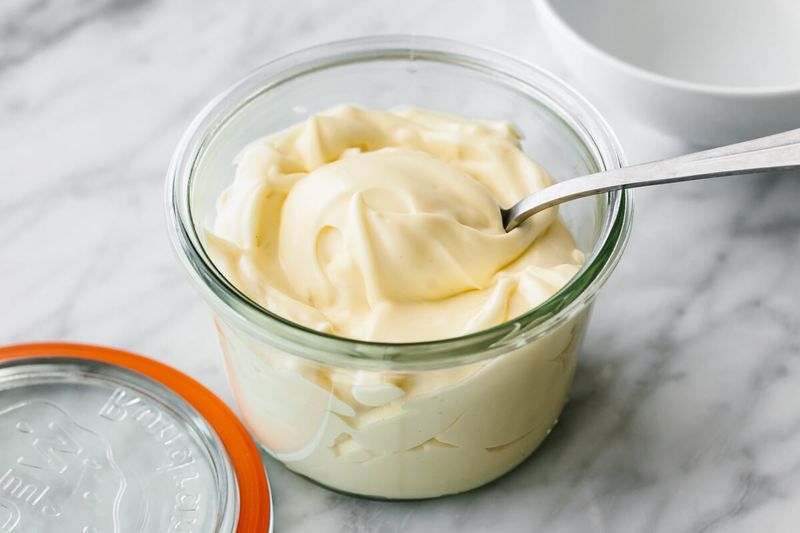
Sandwich savior or calorie catastrophe? This velvety spread transforms dry bread into something magical, but the white goop from the jar comes with some significant nutritional baggage your taste buds don’t want you to think about.
Traditional mayo packs a whopping 90-100 calories and 10g of fat per tablespoon – and most of us slather on several tablespoons without thinking twice. While the fat is mostly unsaturated, the sheer caloric density makes it a condiment worth reconsidering, especially since it offers minimal nutritional benefits beyond some vitamin E.
16. Peanut Butter
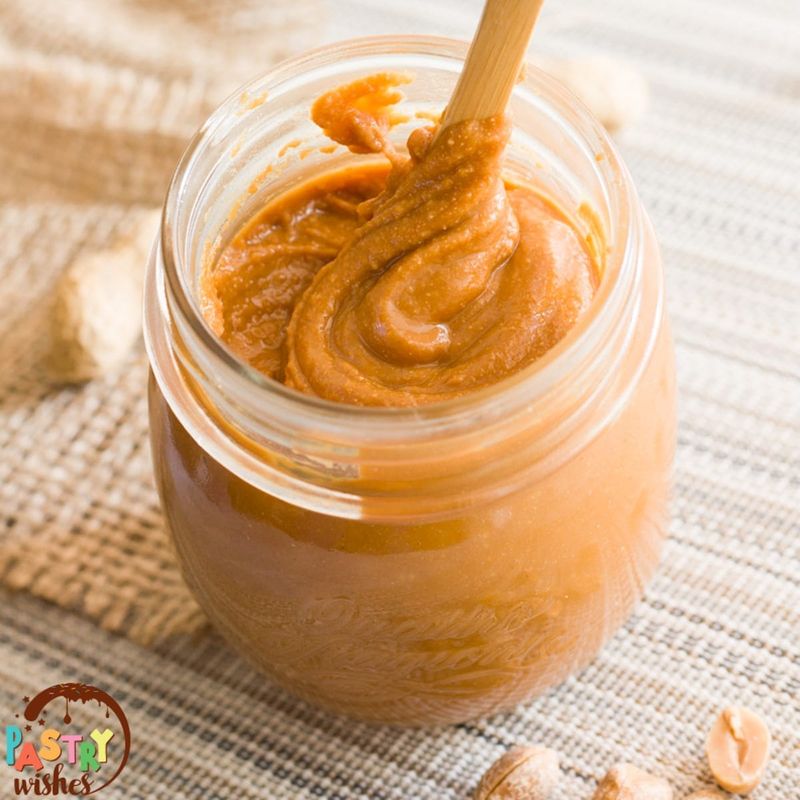
Spoon-straight-from-the-jar delicious and supposedly protein-packed, peanut butter has achieved health food status in many minds. This creamy spread certainly delivers nutritional benefits, but the devil’s in the details – and on the ingredient list.
Natural peanut butter offers healthy fats, protein, and fiber. However, many commercial brands add hydrogenated oils for stability, extra sugar for flavor, and salt for preservation. Even natural versions pack 190 calories per two tablespoons – calories that add up quickly when eaten directly from the container!
17. Canned Tuna

Protein-packed, affordable, and eternally shelf-stable – canned tuna seems like a nutritional no-brainer. This pantry hero delivers lean protein without refrigeration, making it a meal-prep staple for generations of health-conscious eaters.
The mercury content in tuna presents the biggest concern, especially for pregnant women and children. Larger tuna species (albacore/white) contain more mercury than smaller species (skipjack/light). Limit albacore tuna to once weekly for adults and less for children.
18. Frozen Pizza

Friday night hero! That flat box of instant satisfaction has rescued countless evenings when cooking feels impossible. One quick trip to the oven delivers cheesy, saucy comfort with zero effort – but significant nutritional compromise.
Most frozen pizzas are sodium bombs, with a single serving containing up to 700mg – nearly a third of your daily limit! The refined flour crust offers minimal fiber, while processed meats add nitrates and saturated fat. Many varieties also contain artificial preservatives, flavors, and colors to maintain that “fresh-baked” illusion.

